Coordination Characteristics Analysis of Deformation between Polymer Anti-Seepage Wall and Earth Dam under Traffic Load
Abstract
:1. Introduction
2. Deformation Coordination Index
3. Calculation Model
3.1. Overview of Model
3.2. Traffic Load
3.3. Seepage-Stress Coupling Analysis
4. Calculation Results
4.1. Comparison of Deformation Coordination Characteristics between the Anti-Seepage Wall with Different Materials and the Dam Body
4.2. Deformation Coordination Characteristics between Polymer Anti-Seepage Wall and Dam Body
4.2.1. Influence of Amplitude
4.2.2. Influence of Vehicle Speed
4.2.3. Influence of Driving Position
5. Conclusions
Author Contributions
Funding
Institutional Review Board Statement
Informed Consent Statement
Data Availability Statement
Conflicts of Interest
References
- Guo, C.C.; Wang, F.M. Mechanism study on the construction of ultra-thin anti-seepage wall by polymer injection. J. Mater. Civ. Eng. 2012, 24, 1183–1192. [Google Scholar] [CrossRef]
- Yu, X.; Wang, Y.K.; Wang, G.; Xue, B.H.; Zhao, X.H.; Du, X.M. Study on Working Behaviors and Improvement Strategies of Concrete Cutoff Wall with Slurry Cake in Thick Soil Foundation. Int. J. Geomech. 2022, 22, 04022075. [Google Scholar] [CrossRef]
- Fang, H.Y.; Zhao, P.; Zhang, C.; Pan, W.; Yu, Z.S.; Cai, K.; Wang, C.X.; Wang, J.; Du, M.R.; He, W.; et al. A cleaner polyurethane elastomer grouting material with high hardening strain for the fundamental rehabilitation: The comprehensive mechanical properties study. Constr. Build. Mater. 2022, 318, 125951. [Google Scholar] [CrossRef]
- Hao, M.M.; Wang, F.M.; Li, X.L.; Zhang, B.; Zhong, Y.H. Numerical and experimental studies on diffusion law of grouting with expansible polymer. J. Mater. Civ. Eng. 2018, 30, 04017290. [Google Scholar] [CrossRef]
- Wang, Z.Y.; Du, M.R.; Fang, H.Y.; Zhang, C.; Li, M.J.; Shi, M.S. Influence of different corrosion environments on mechanical properties of a roadbed rehabilitation polyurethane grouting material under uniaxial compression. Constr. Build. Mater. 2021, 301, 124092. [Google Scholar] [CrossRef]
- Li, M.J.; Fang, H.Y.; Du, M.R.; Zhang, C.; Su, Z.; Wang, F.M. The behavior of polymer-bentonite interface under shear stress. Constr. Build. Mater. 2020, 248, 118680. [Google Scholar] [CrossRef]
- Li, M.J.; Du, M.R.; Wang, F.M.; Xue, B.H.; Zhang, C.; Fang, H.Y. Study on the mechanical properties of polyurethane (PU) grouting material of different geometric sizes under uniaxial compression. Constr. Build. Mater. 2020, 259, 119797. [Google Scholar] [CrossRef]
- Fang, H.; Zheng, Q.; Du, M.; Liu, J.; Zhang, C.; Wang, Z.; Wang, F. Study of the Mechanical Properties and Constitutive Model of the Roadbed Rehabilitation Polyurethane Grouting Materials Under Uniaxial Compression. J. Appl. Polym. Sci. 2022, 139, 52276. [Google Scholar] [CrossRef]
- Hao, M.M.; Li, X.L.; Wang, X.L.; Zhong, Y.H.; Zhang, B.; Wang, F.M.; Zhang, Y.L. Experimental Study On Viscosity Characteristics of Expanding Polymer Grout. J. Wuhan Univ. Technol. Mater. Sci. 2021, 36, 297–302. [Google Scholar] [CrossRef]
- Li, M.J.; Zhang, C.; Fang, H.Y.; Du, M.R.; Su, Z.; Wang, F.M. Effects of Water Content On Shear Properties of Bentonite-Polymer Composite Structure. Eng. Geol. 2021, 287, 106098. [Google Scholar] [CrossRef]
- Zhang, S.; Xue, B.H.; Wang, J.; Gao, J.L.; Wang, C.J.; Li, W.Z. Preliminary Study of Nondestructive Testing of the Polymer Cutoff Wall Based on Vibration Theory. Adv. Mater. Sci. Eng. 2021, 2021, 4444684. [Google Scholar] [CrossRef]
- Li, J.; Zhang, J.W.; Xu, J.G.; Wang, F.M.; Wang, B. Dynamic behavior of polymer anti-seepage wall for earth dam by centrifuge test. Int. J. Geomech. 2018, 18, 04018179. [Google Scholar] [CrossRef]
- Li, J.; Zhang, J.; Hu, H. Numerical analysis on dynamic responses of earth-rock dam with polymer anti-seepage wall under seismic load. In Proceedings of the 2016 3rd International Conference on Information Science and Control Engineering (ICISCE), Beijing, China, 8–10 July 2016; pp. 492–496. [Google Scholar] [CrossRef]
- Li, J.; Zhang, J.W.; Wang, Y.K.; Wang, B. Seismic response of earth dam with innovative polymer anti-seepage wall. Int. J. Geomech. 2020, 20, 04020079. [Google Scholar] [CrossRef]
- Zhang, G.X.; Liu, Y.; Zheng, C.Y.; Feng, F. Simulation of the influence of multi-defects on long-term working performance of high arch dam. Sci. China Technol. Sci. 2011, 54, 1–8. [Google Scholar] [CrossRef]
- Luo, D.N.; Hu, Y.; Li, Q.B. An interfacial layer element for finite element analysis of arch dams. Eng. Struct. 2016, 128, 400–414. [Google Scholar] [CrossRef]
- Sator, C.; Becker, W. Closed-form solutions for stress singularities at plane bi- and tri-material junctions. Arch. Appl. Mech. 2012, 82, 643–658. [Google Scholar] [CrossRef]
- Carpinteri, A.; Paggi, M. Analytical study on the singularities arising at multi-material interfaces in 2D linear elastic problems. Eng. Fract. Mech. 2007, 74, 59–74. [Google Scholar] [CrossRef]
- Liu, D.H.; Li, Z.L.; Liu, J.L. Experimental study on real-time control of roller compacted concrete dam compaction quality by using unit compaction energy indices. Constr. Build. Mater. 2015, 96, 567–575. [Google Scholar] [CrossRef]
- Huangfu, Z.H.; Wu, Y.L.; Guo, W.L. Deformation compatibility analysis on clay core wall dams based on multi-objective optimization theory. J. Hydroelectr. Eng. 2020, 39, 99–108. (In Chinese) [Google Scholar] [CrossRef]
- Sarkar, A. Numerical comparison of flexible pavement dynamic response under different axles. Int. J. Pavement Eng. 2016, 17, 377–387. [Google Scholar] [CrossRef]
- Zhao, H.Y.; Indraratna, B.; Ngo, T. Numerical simulation of the effect of moving loads on saturated subgrade soil. Comput. Geotech. 2021, 131, 103930. [Google Scholar] [CrossRef]
- Guo, M.; Hou, F.J.; Zhang, S.X.; Li, X.; Li, Y.L.; Bi, Y.F. Research and Evaluation on Dynamic Response Characteristics of Various Pavement Structures. Adv. Mater. Sci. Eng. 2022, 2022, 5302142. [Google Scholar] [CrossRef]
- Liu, J.S.; Zhu, K.X.; Shen, Y.; Ren, Y.; Zuo, J.P.; Zhang, X.F. Experimental Investigation On the Deformation and Noncoaxial Characteristics of Fiber-Reinforced Aeolian Soil Under Traffic Load. Int. J. Geomech. 2022, 5, 04022054. [Google Scholar] [CrossRef]
- Qian, J.G.; Du, Z.B.; Lu, X.L.; Gu, X.Q.; Huang, M.S. Effects of Principal Stress Rotation On Stress-Strain Behaviors of Saturated Clay Under Traffic-Load-Induced Stress Path. Soils Found. 2019, 59, 41–55. [Google Scholar] [CrossRef]
- Li, N.H.; Wang, J.L.; Mi, Z.K.; Li, D.H. Connotation of deformation safety of high concrete face rockfill dams and its application. Chin. J. Geotech. Eng. 2012, 32, 193–201. (In Chinese) [Google Scholar]
- Kyriakidis, P.; Gaganis, P. Efficient Simulation of (Log)Normal Random Fields for Hydrogeological Applications. Math. Geosci. 2013, 45, 531–556. [Google Scholar] [CrossRef]
- Liu, Y.; Hu, J.; Wei, H.; Saw, A.L. A Direct Simulation Algorithm for a Class of Beta Random Fields in Modelling Material Properties. Comput. Methods Appl. Mech. Eng. 2017, 326, 642–655. [Google Scholar] [CrossRef]
- Xue, B.H.; Du, X.M.; Wang, J.; Yu, X. A Scaled Boundary Finite-Element Method with B-Differentiable Equations for 3D Frictional Contact Problems. Fractal Fract. 2022, 6, 133. [Google Scholar] [CrossRef]





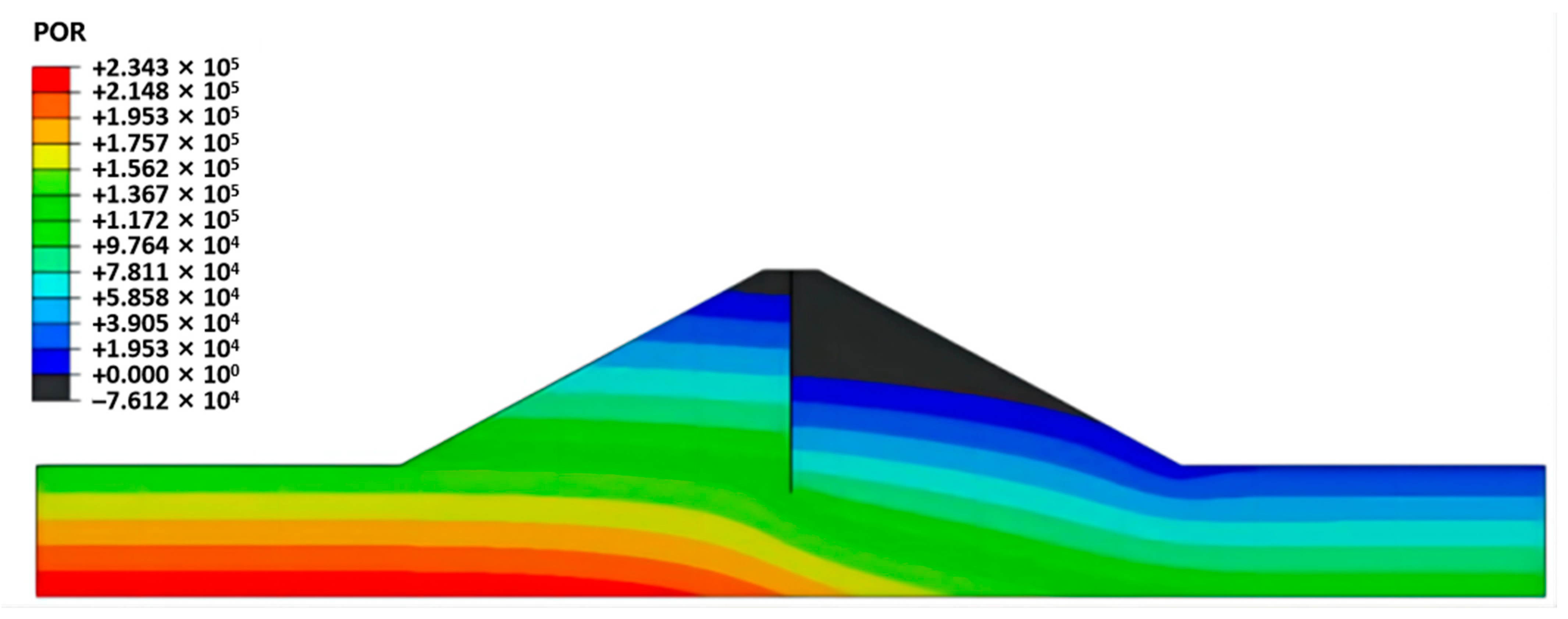
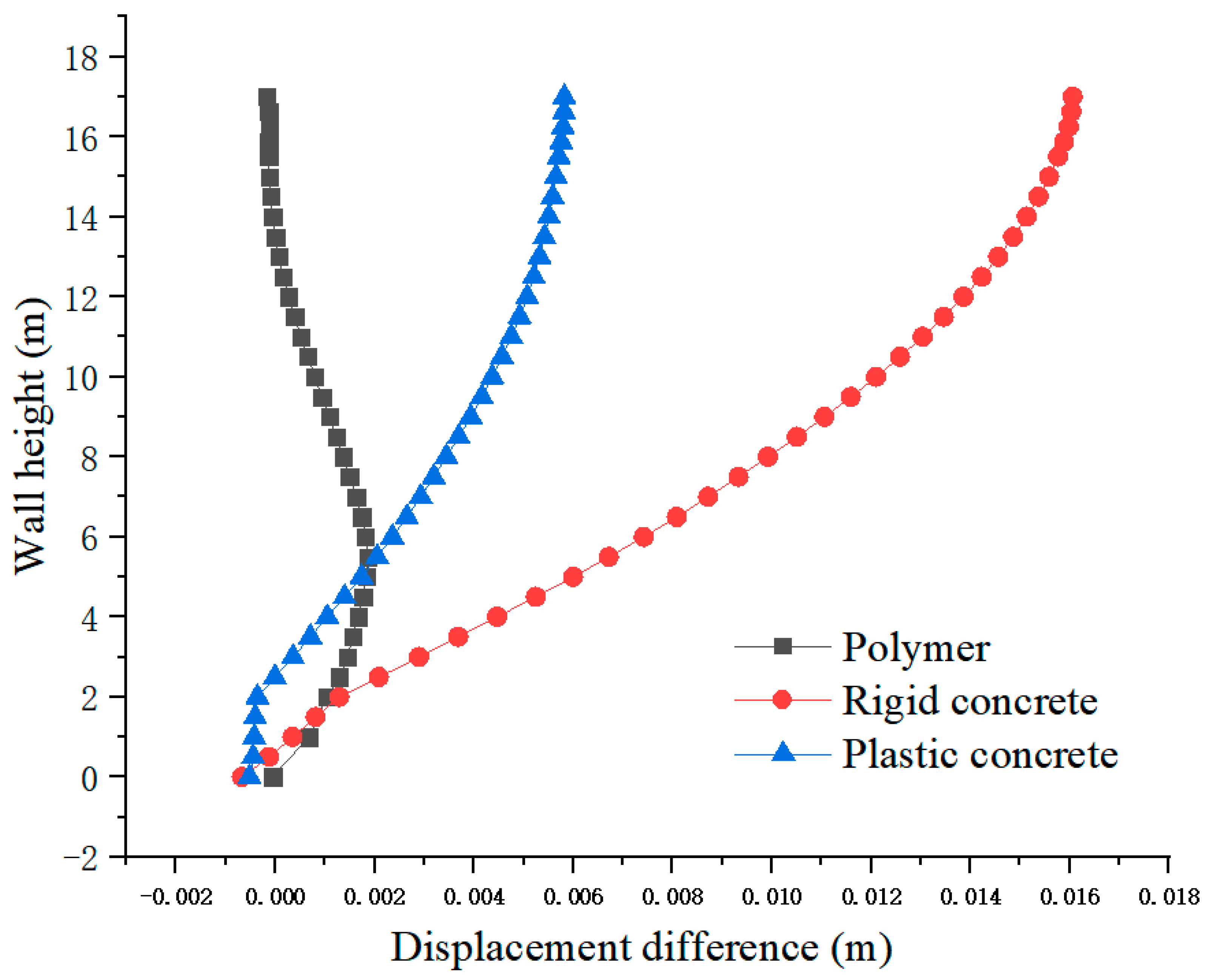
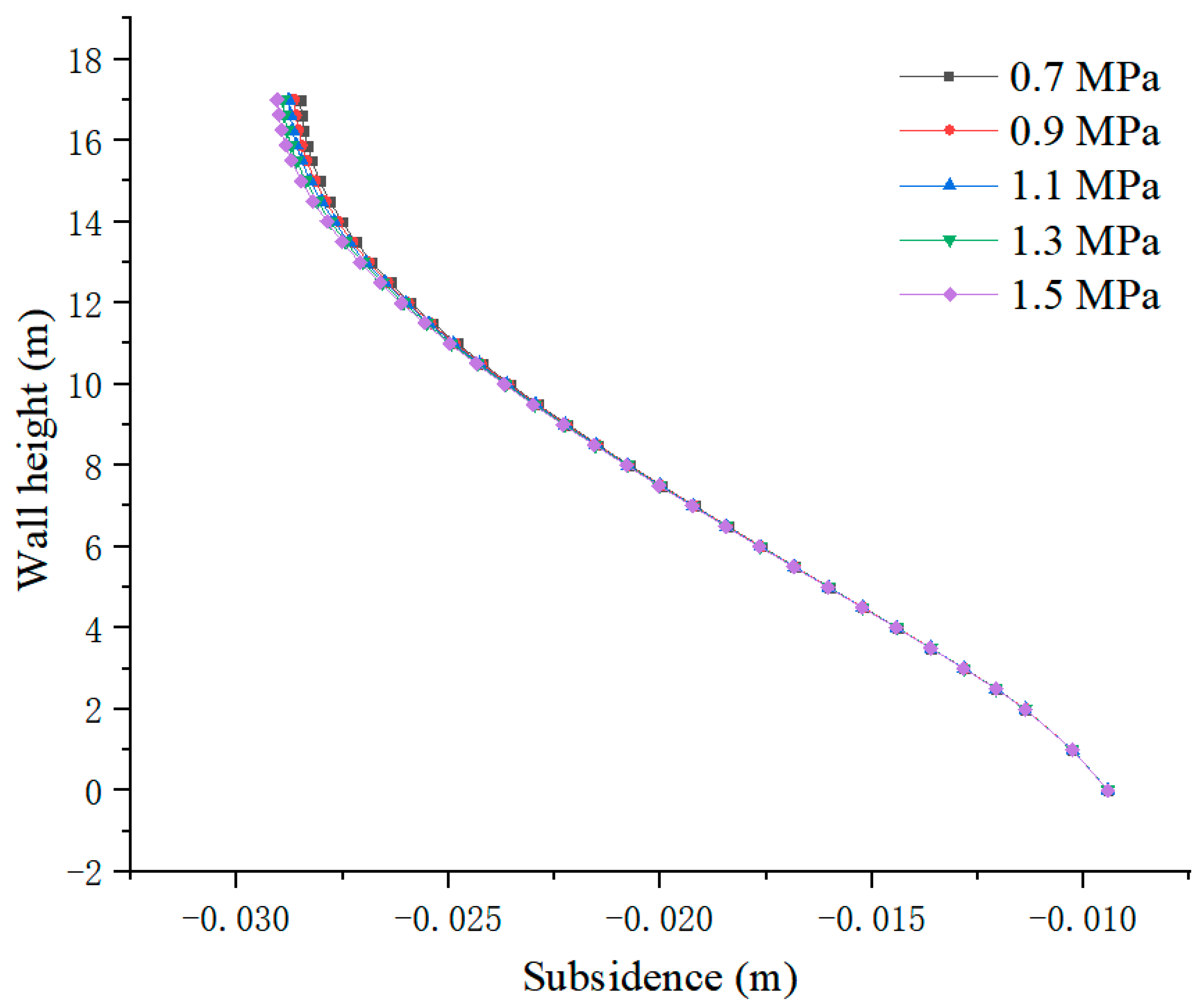



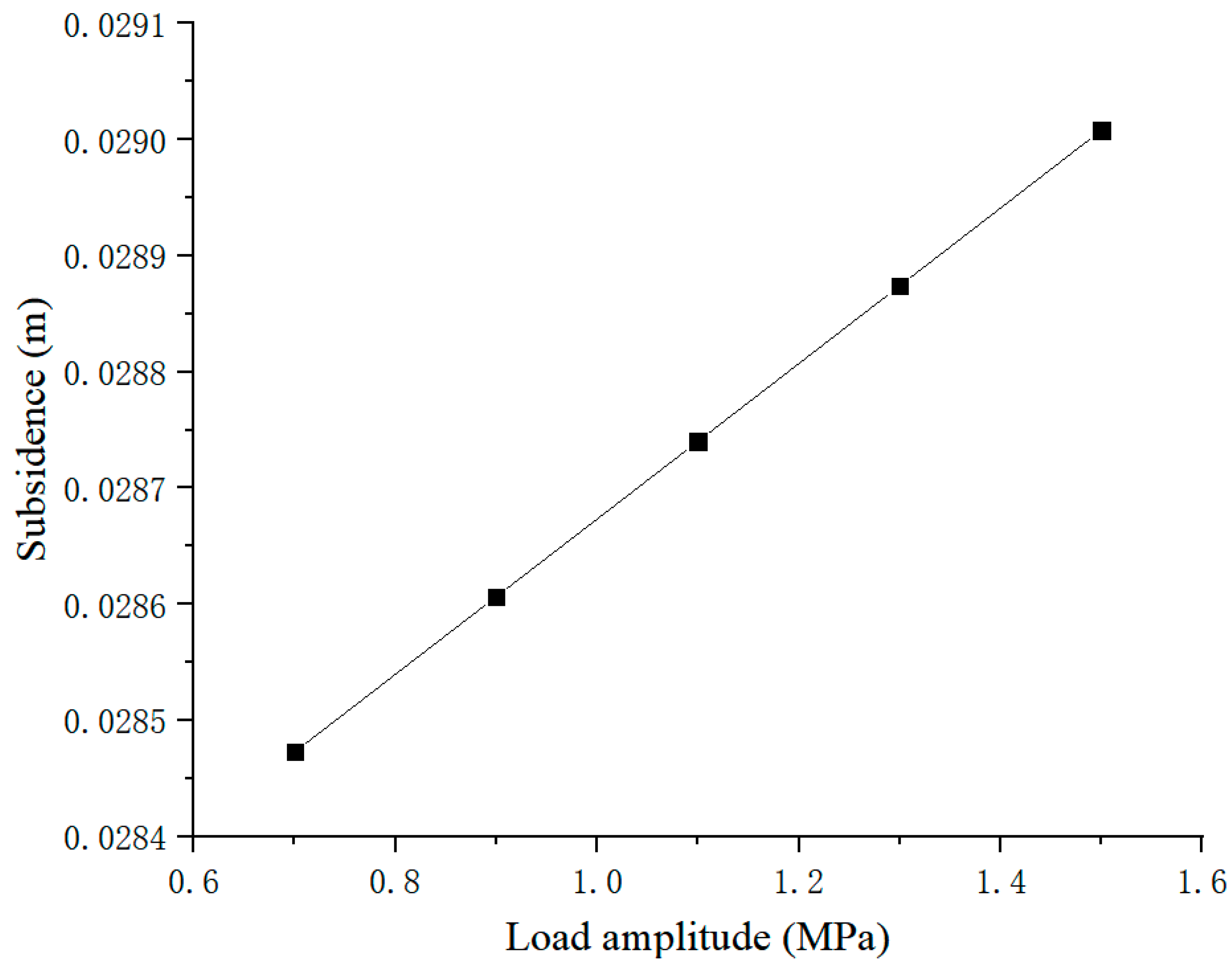

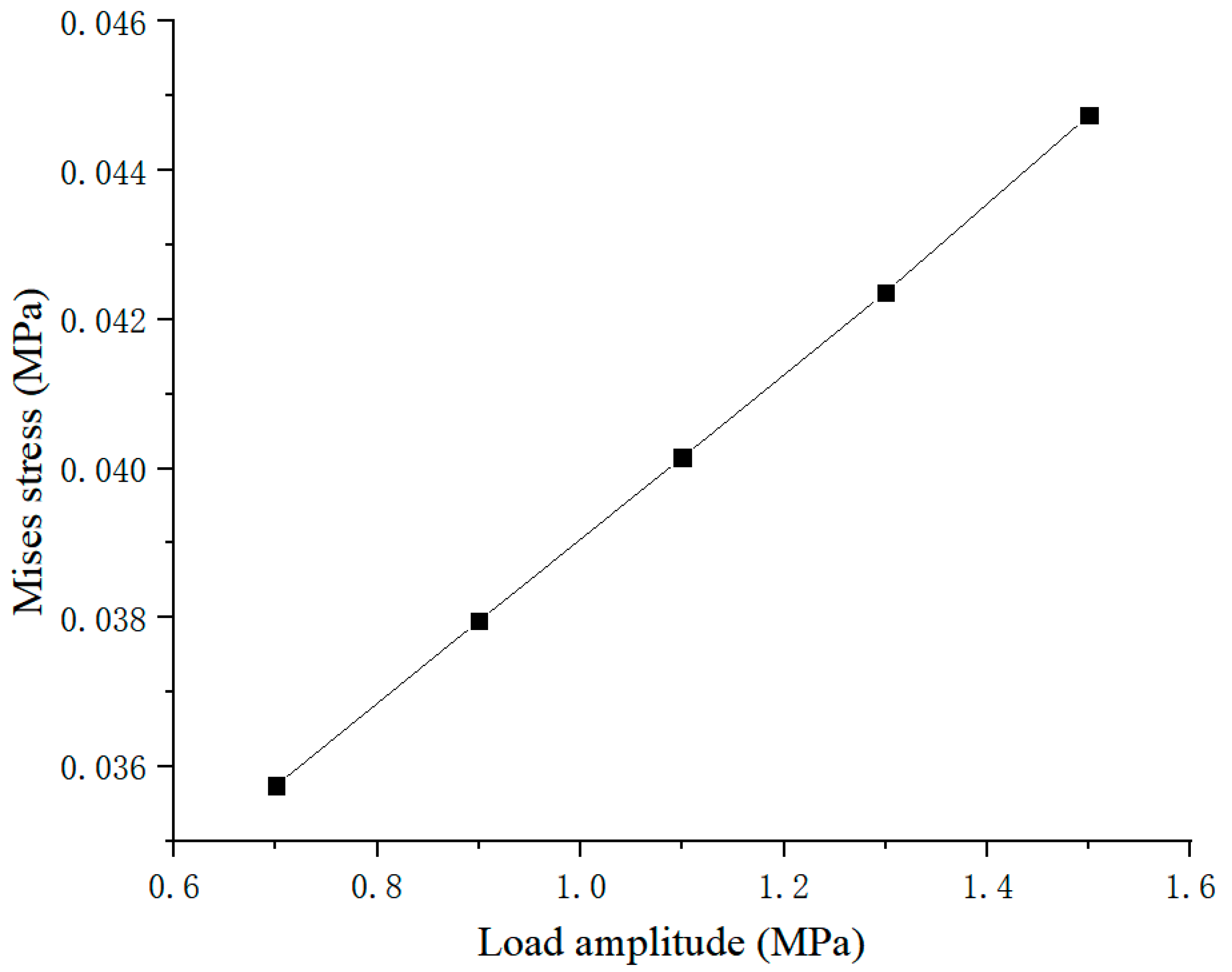

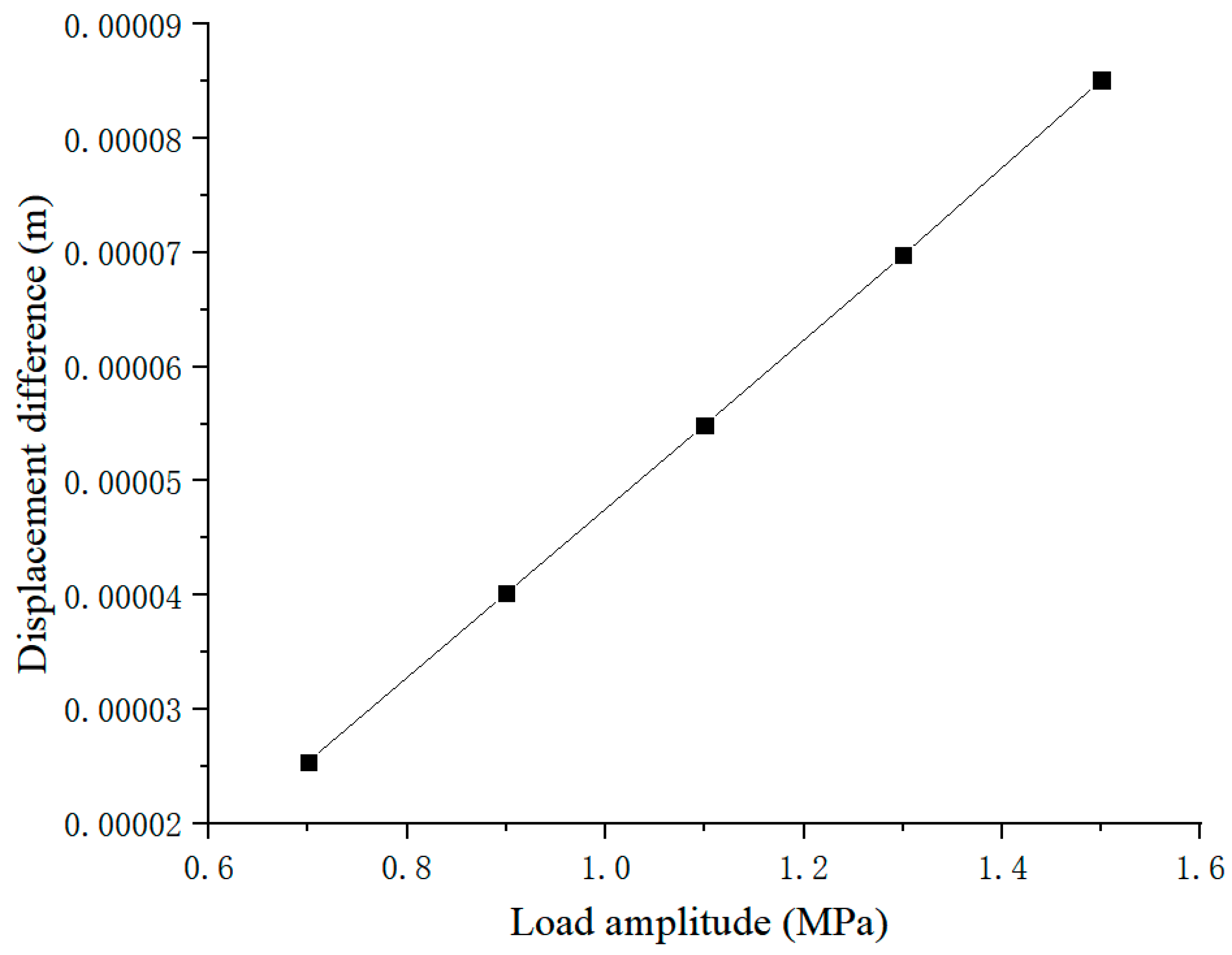

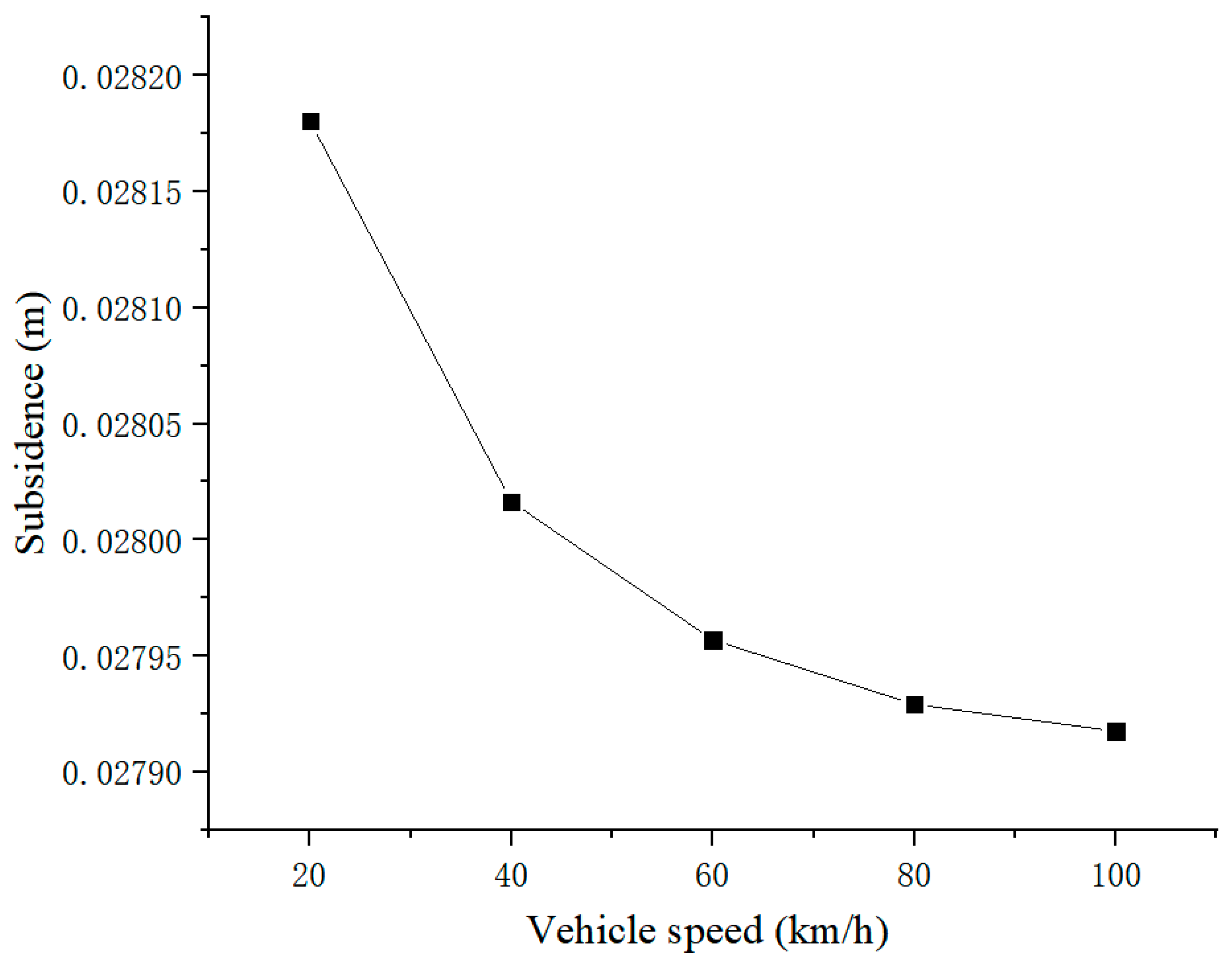


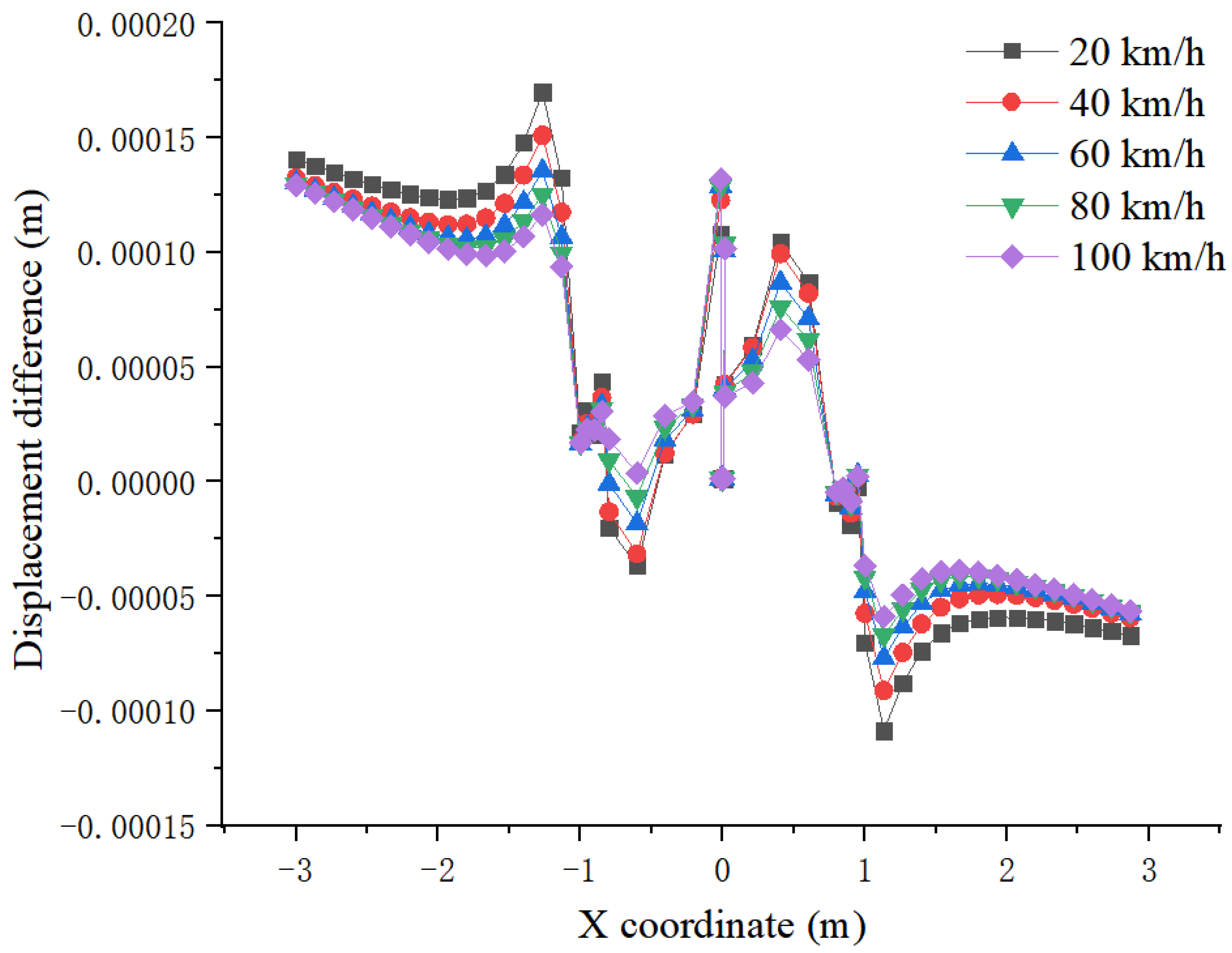
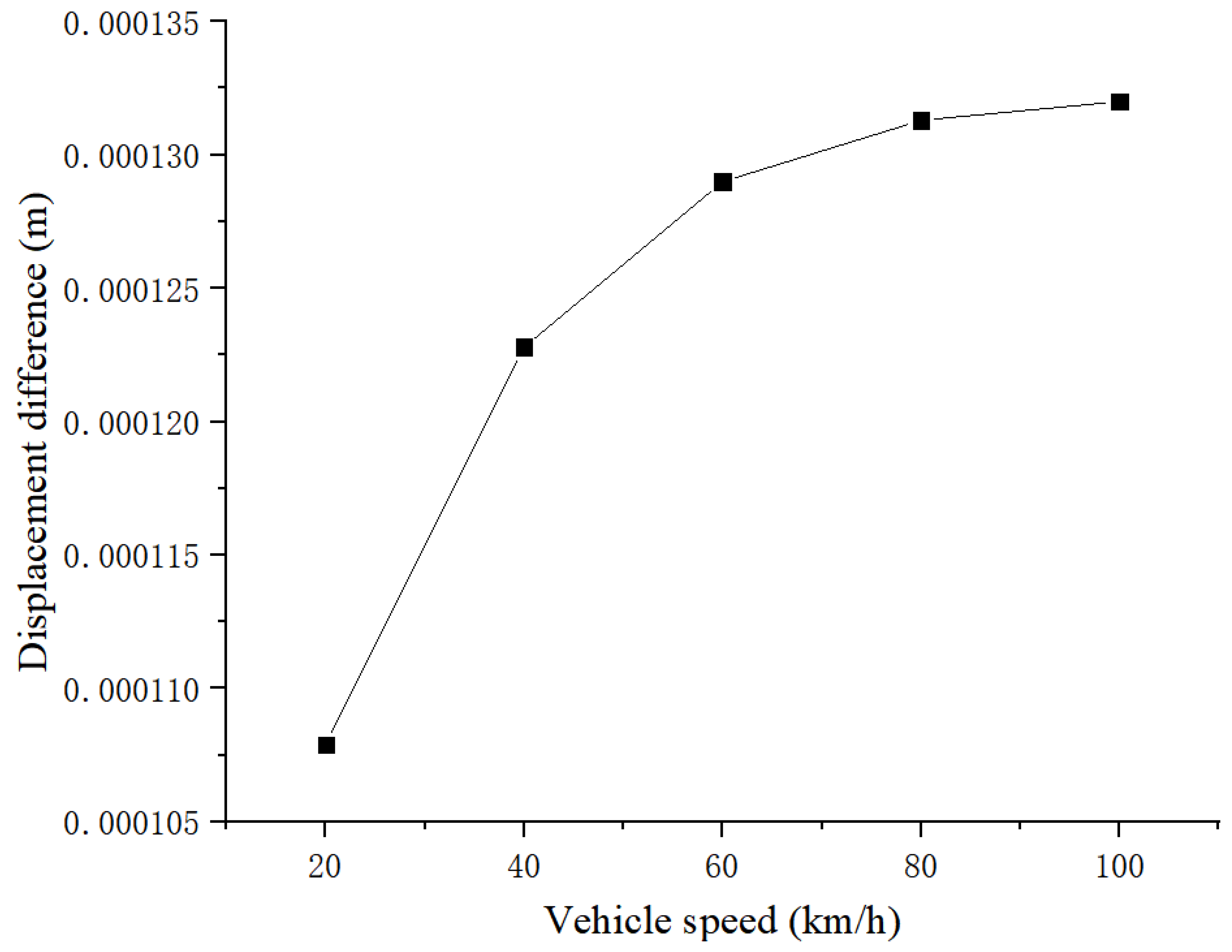
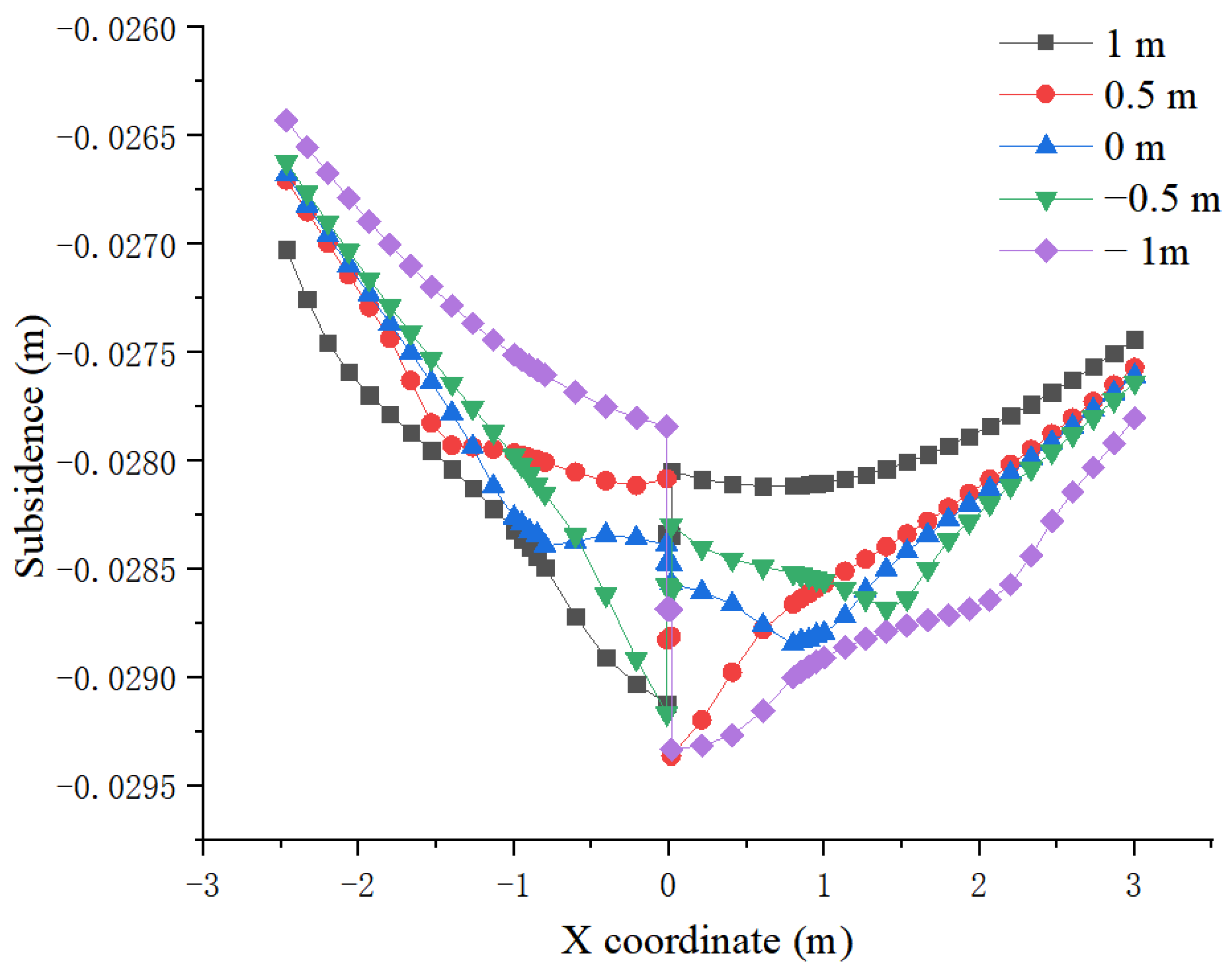
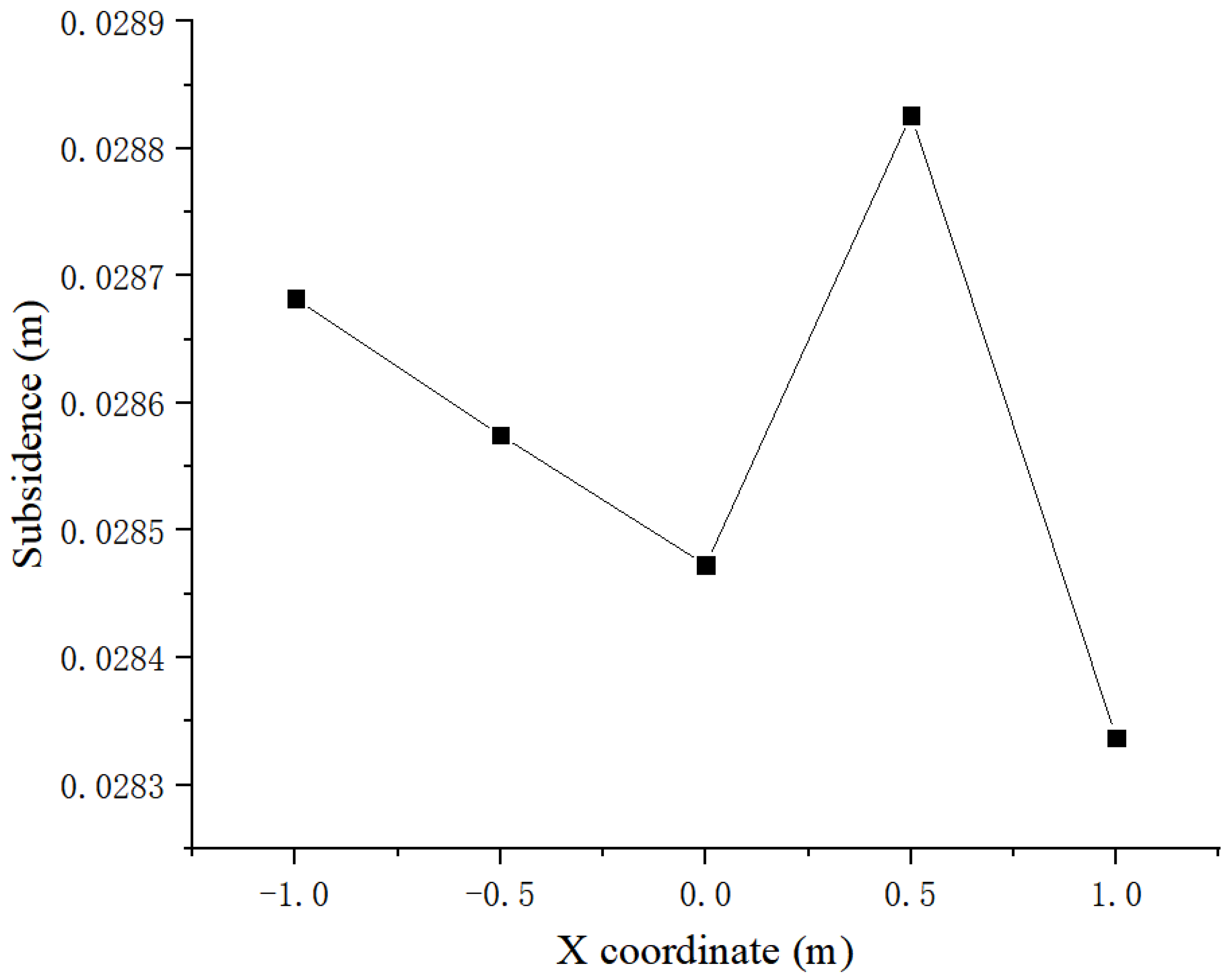
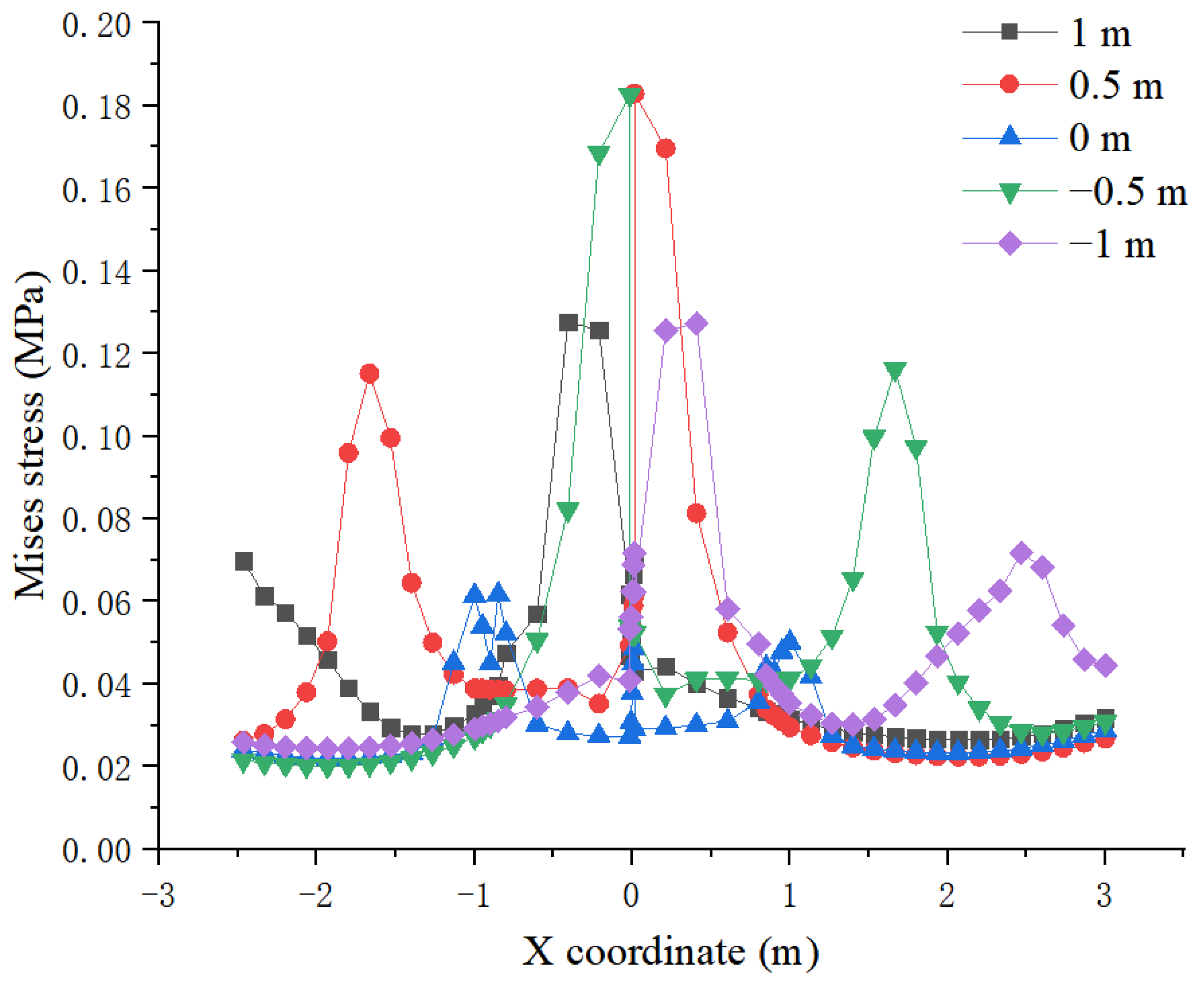

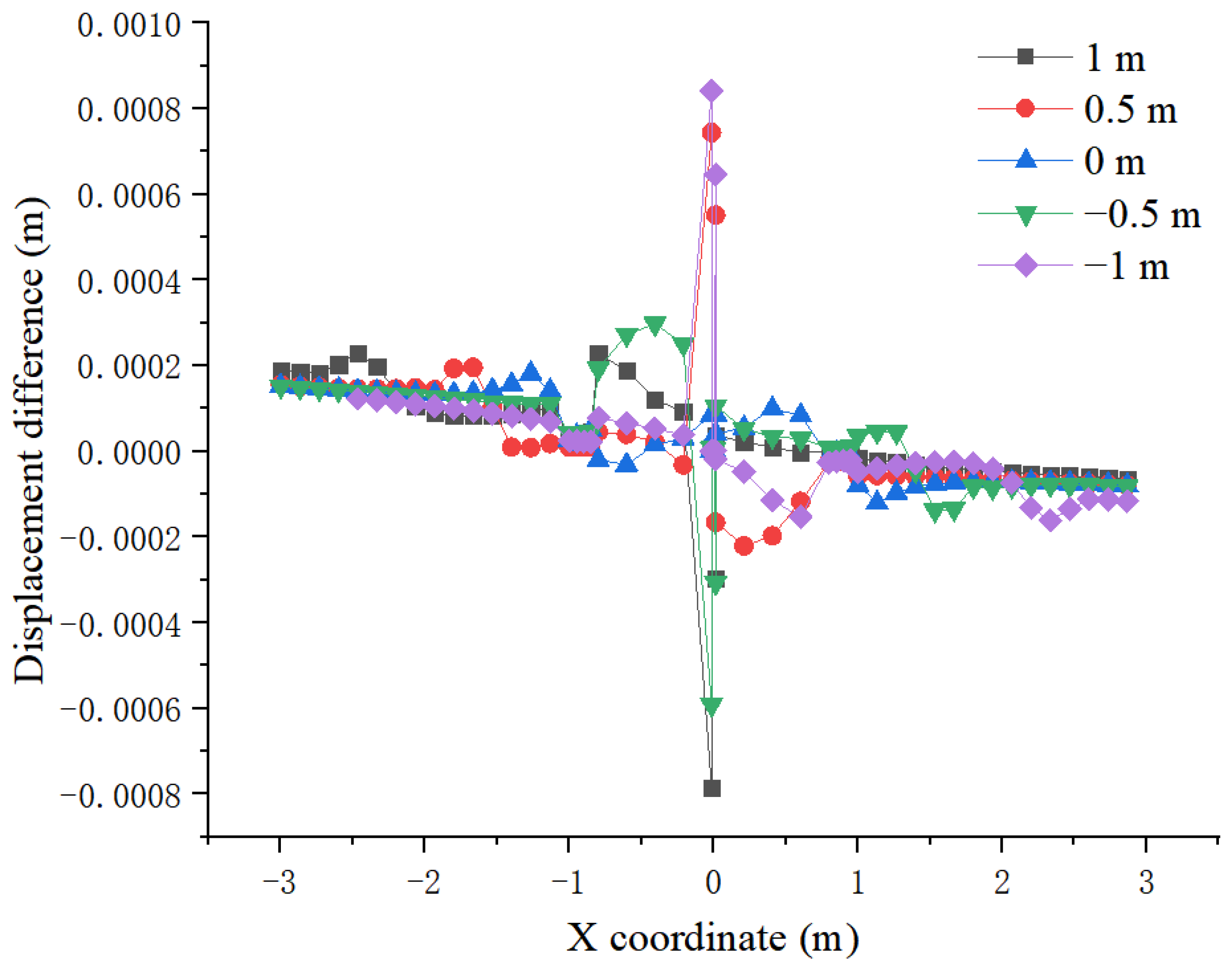
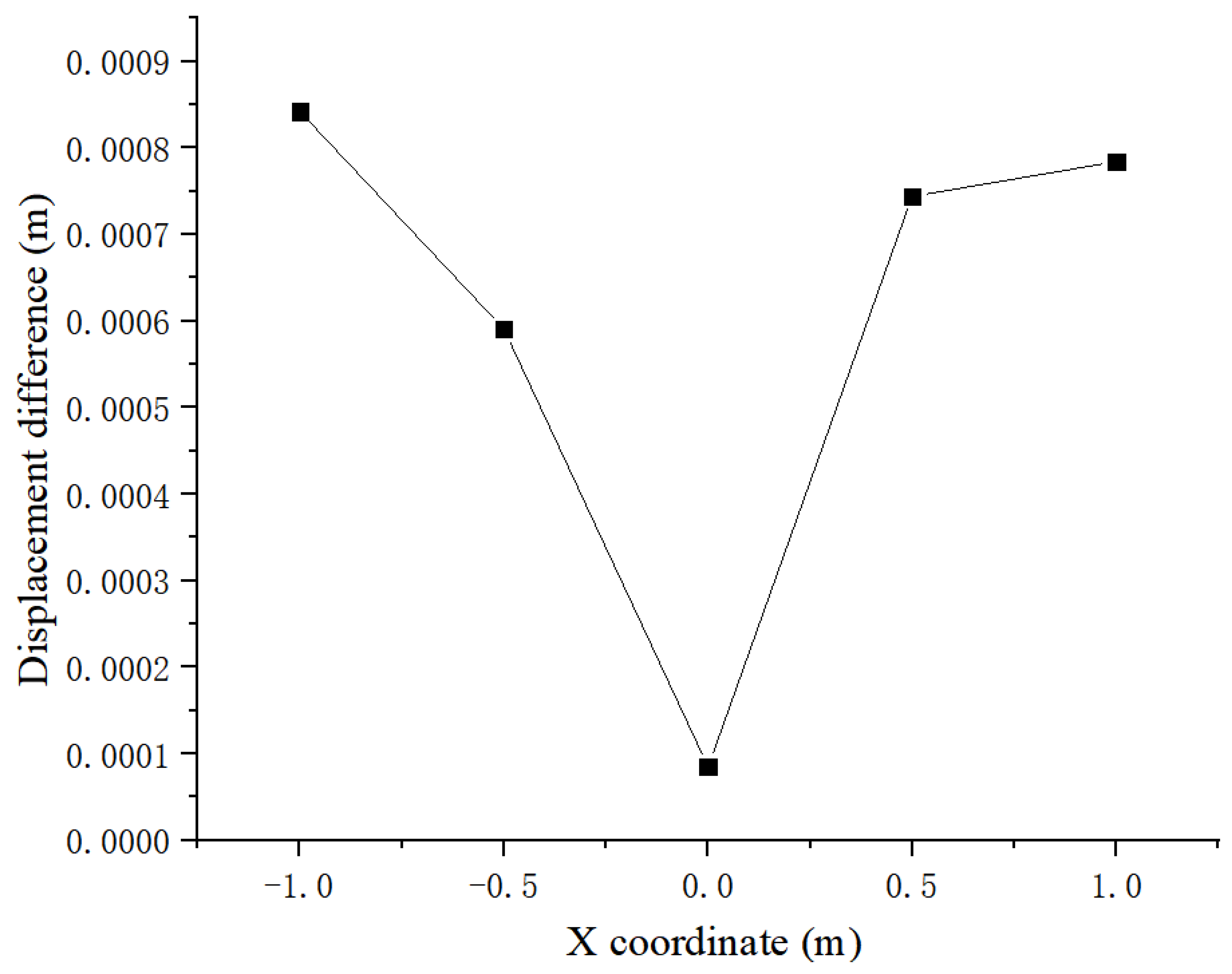
| Material | Density (kg/m3) | Young’s Modulus (kPa) | Poisson’s Ratio | Permeating Coefficient (cm/s) | Cohesion (kPa) | Internal Friction Angle | Dilatancy Angle |
|---|---|---|---|---|---|---|---|
| Dam | 1930 | 100,000 | 0.29 | 5 × 10−7 | 12.38 | 20 | 0 |
| Polymer | 300 | 100,176 | 0.258 | 1 × 10−10 | — | — | — |
| Rigid concrete | 2400 | 20,000,000 | 0.3 | 1 × 8−10 | — | — | — |
| Plastic concrete | 2400 | 500,000 | 0.25 | 1 × 8−10 | — | — | — |
| S/N | Parameter | Symbol | Value |
|---|---|---|---|
| 1 | Tangential stiffness coefficient | 300 | |
| 2 | Normal stiffness coefficient | 300 | |
| 3 | Test constant | n | 0.34 |
| 4 | Damage ratio | 0.95 | |
| 5 | Interfacial friction angle | δ | 11.3 |
| 6 | Water bulk density | 100 | |
| 7 | Atmospheric pressure | 1000 |
| S/N | Parameter | Symbol | Value |
|---|---|---|---|
| 1 | Tangential stiffness coefficient | 1400 | |
| 2 | Normal stiffness coefficient | 1400 | |
| 3 | Test constant | n | 0.35 |
| 4 | Damage ratio | 0.75 | |
| 5 | Interfacial friction angle | δ | 15 |
| 6 | Water bulk density | 100 | |
| 7 | Atmospheric pressure | 1000 |
| S/N | Load Amplitude (MPa) | Vehicle Speed (km/h) | Driving Position (m) |
|---|---|---|---|
| 1 | 0.7 | 20 | 1 |
| 2 | 0.9 | 40 | 0.5 |
| 3 | 1.1 | 60 | 0 |
| 4 | 1.3 | 80 | −0.5 |
| 5 | 1.5 | 100 | −1 |
Publisher’s Note: MDPI stays neutral with regard to jurisdictional claims in published maps and institutional affiliations. |
© 2022 by the authors. Licensee MDPI, Basel, Switzerland. This article is an open access article distributed under the terms and conditions of the Creative Commons Attribution (CC BY) license (https://creativecommons.org/licenses/by/4.0/).
Share and Cite
Fang, H.; Zhang, H.; Xue, B.; Gao, J.; Li, Y.; Gao, X.; Tian, A. Coordination Characteristics Analysis of Deformation between Polymer Anti-Seepage Wall and Earth Dam under Traffic Load. Water 2022, 14, 1442. https://doi.org/10.3390/w14091442
Fang H, Zhang H, Xue B, Gao J, Li Y, Gao X, Tian A. Coordination Characteristics Analysis of Deformation between Polymer Anti-Seepage Wall and Earth Dam under Traffic Load. Water. 2022; 14(9):1442. https://doi.org/10.3390/w14091442
Chicago/Turabian StyleFang, Hongyuan, Hong Zhang, Binghan Xue, Jianglin Gao, Yan Li, Xinlei Gao, and Aiping Tian. 2022. "Coordination Characteristics Analysis of Deformation between Polymer Anti-Seepage Wall and Earth Dam under Traffic Load" Water 14, no. 9: 1442. https://doi.org/10.3390/w14091442
APA StyleFang, H., Zhang, H., Xue, B., Gao, J., Li, Y., Gao, X., & Tian, A. (2022). Coordination Characteristics Analysis of Deformation between Polymer Anti-Seepage Wall and Earth Dam under Traffic Load. Water, 14(9), 1442. https://doi.org/10.3390/w14091442








